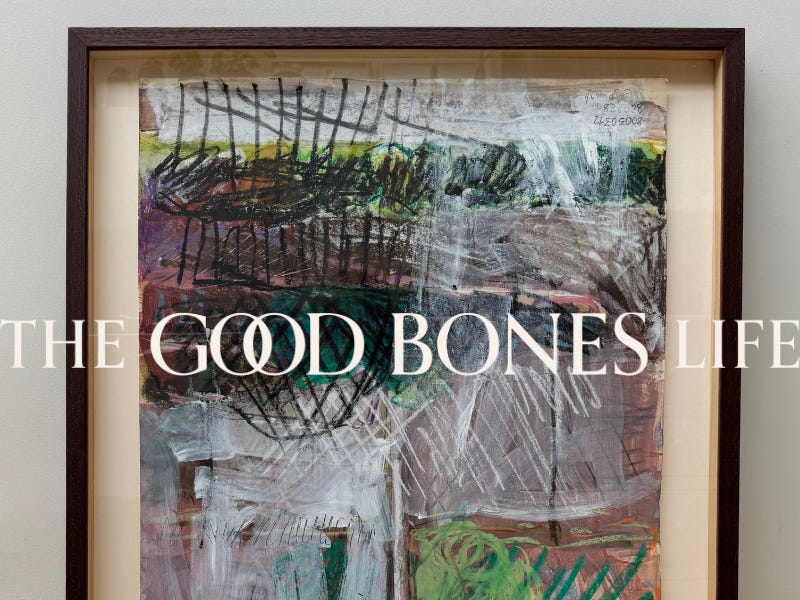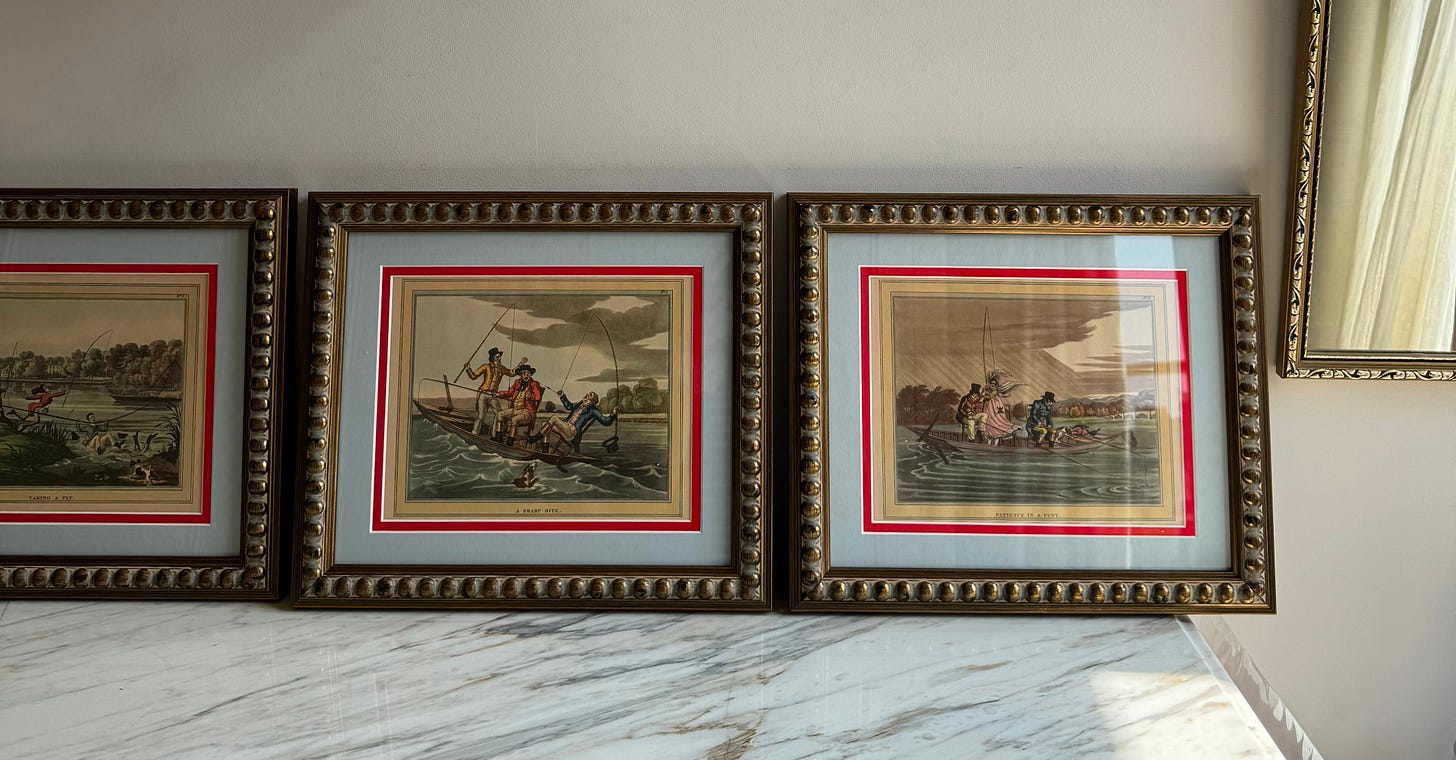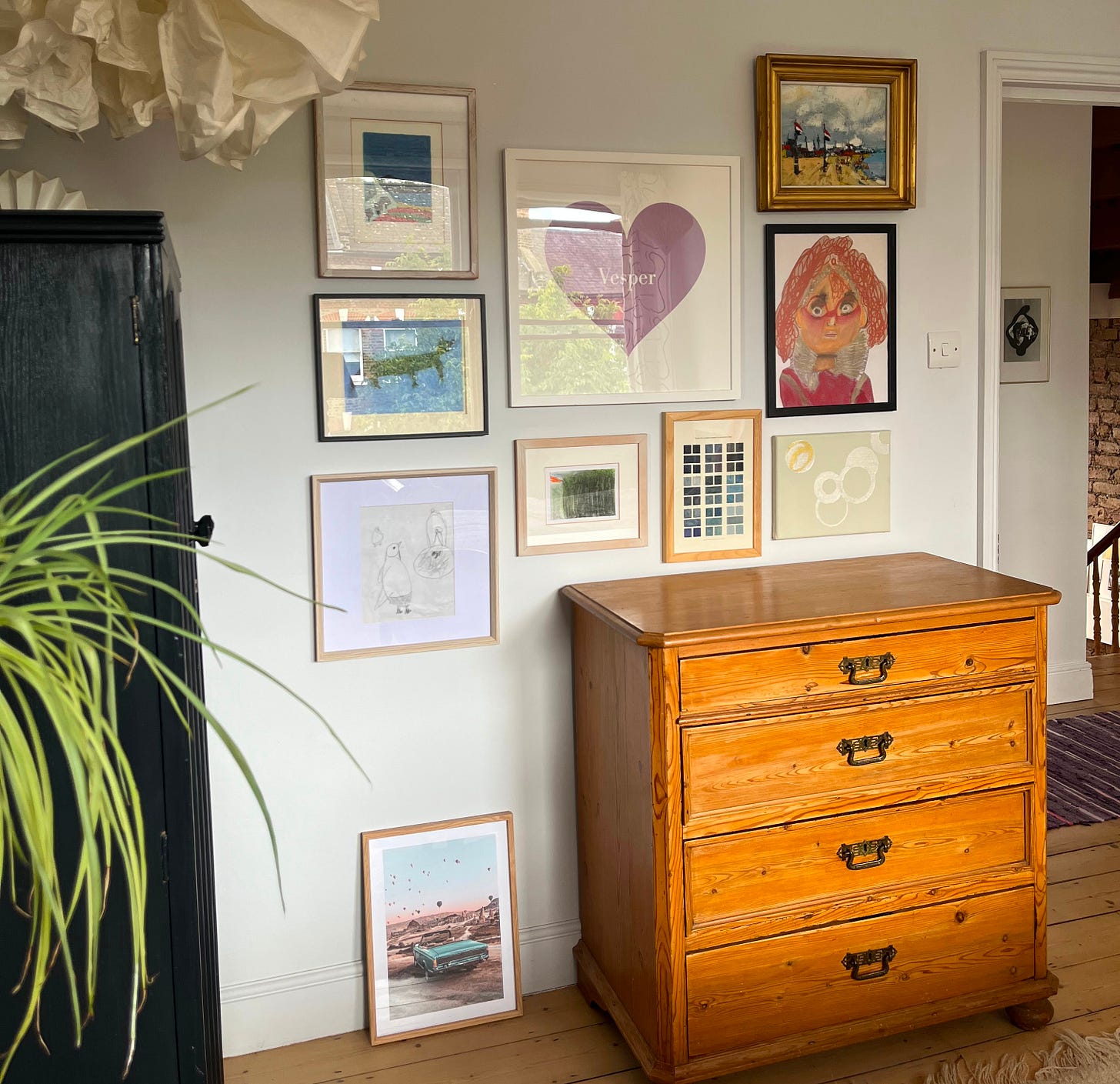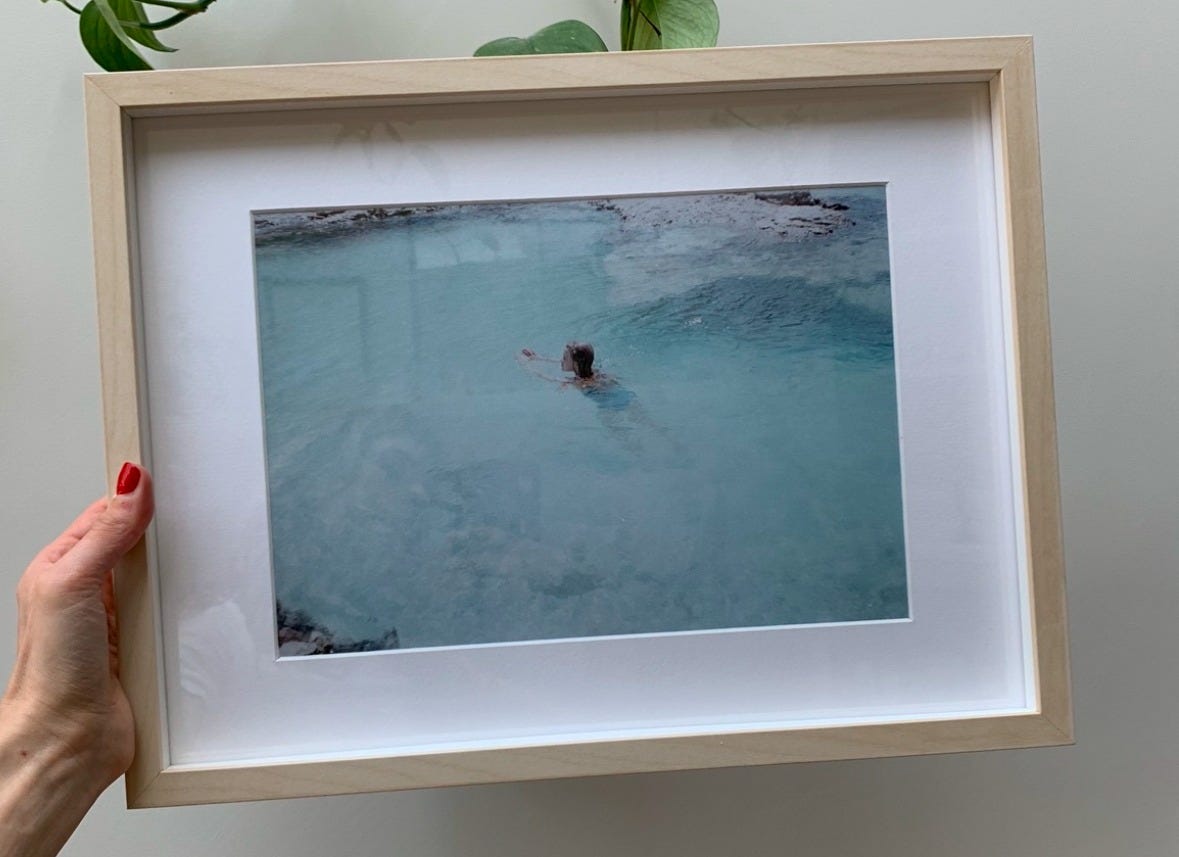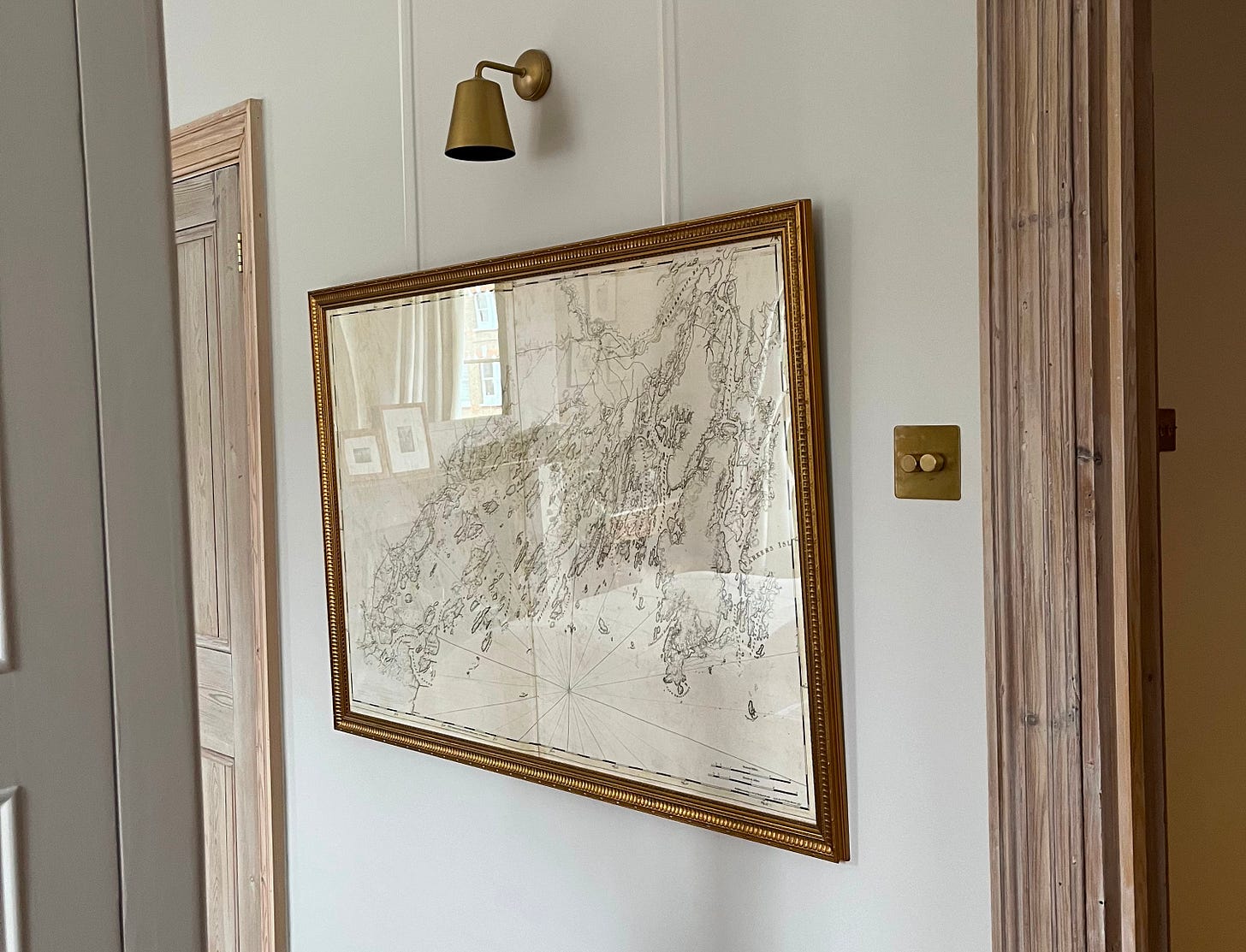If money was no object, I would use professional framers to frame my art. The difference between an off-the-shelf frame and a custom frame and mount makes an enormous difference, and an expertly framed piece is art in itself.
But, for most of us, money is an object. So, thankfully, we have options. Let’s dive into them, including exactly what I order and from where.
I frame all sorts of stuff. Menus, my kids’ drawings, photo booth strips, maps, pages removed from old botanical manuals. A really good frame will elevate whatever is being framed, even if it’s the simplest thing.
Here’s what I do, starting with the most accessible options and working my way up.
Off-the-Shelf Frames
These frames are easy to shop for and inexpensive to buy so they’re a good option when those factors take precedence. Off-the-shelf frames are an obvious choice when your art is a standard size, but can also be made to fit smaller-than-standard art by using a custom mount (more on that in the custom frame section, below).
I tend to use standard, store-bought frames for things like kids’ art and family photographs.
Standard frames are available a million places, but I usually turn to:
IKEA (my preferred styles are here and here. I love that they’re box frames and come with mounts that you can opt in or out of). With the box frames, you can achieve a floating effect by attaching your artwork to foam board mounted on the back board.
Dunelm (my preferred style is here)
Zara Home (especially for table top frames like this and floating frames like this, which are so good for oddly-shaped things)
The Hambeldon for their brass frames
Custom Online Framers
These online frame shops are my jam. I learned about made-to-measure online framers years ago from Simin at The Arbery, who, in her London home, had mastered the art of the gallery wall. I choose the online framer based on which frames they have in stock and what sorts of extras they offer. There is a little bit of DIY involved — you have to remove the film from both sides of the glazing, fit your art into the frame/mount (and, if you’re mounting it on a foam board in a box frame, do that part, too), and then attach the hanging mechanism yourself — but trust me, it’ll all be worth it.
You can choose the style and size frame you want, as well as the mount size, style and colour if you’re going for a mount. I tend to go with thinner gold/gilt or timber frames, but the world is your oyster! Consider the overall dimensions of the framed piece when deciding the width of your frame, whether or not you want a mount, and what size the mount should be. The overall dimensions of the frame should suit the space you’re planning to hang or place the art, so a mount can be useful to fill out a space better.
Custom mounts are a wonderful way to make an artwork feel like it was framed really intentionally. You can choose a single mount, an accent mount (which has another mount revealed beneath), a mount with a white or black (or sometimes even metallic) core (internal colour), red mounts, white mounts, blue mounts. You can go with custom borders widths or a gallery mount, which has a weighted bottom border. These are all easily, endlessly customisable, can be purchased separately, and can be a brilliant way to elevate what might otherwise be a very simple photograph, sketch or print.
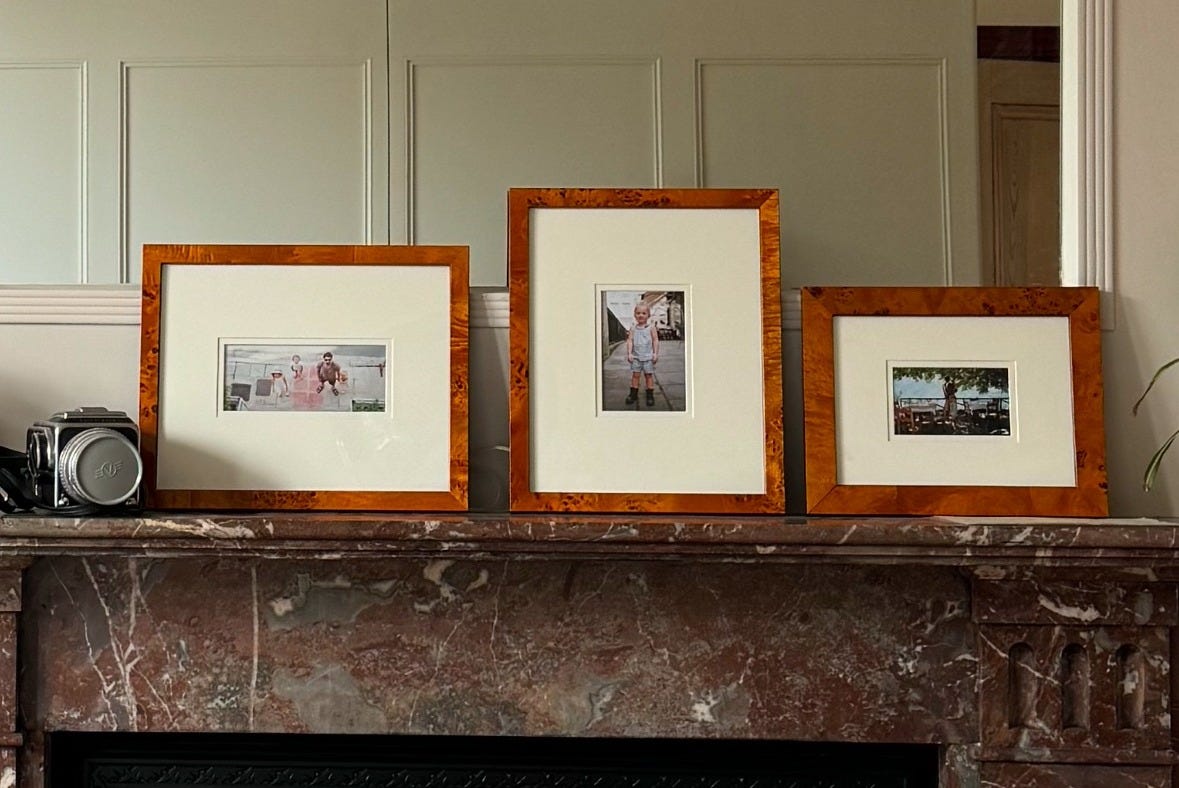
The important thing with custom framing online is to trust the process and accurately measure what you’re framing. Don’t fudge the measurements — the websites are designed to take into account the actual dimensions of the art, not what you think the frame or mount aperture should be.
Here’s where I order my made-to-measure online frames and exactly what I’ve ordered to achieve certain framing looks for my art.
Keep reading with a 7-day free trial
Subscribe to The Good Bones Life to keep reading this post and get 7 days of free access to the full post archives.



